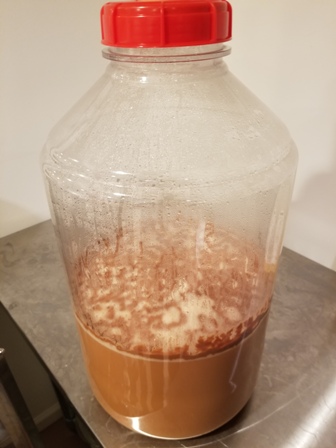Purchased 3 gallons of fresh cider from a local farm today. Want to make homemade hard cider. First time making hard cider using fresh cider.
I'll add enough water and 2 pounds of corn sugar to get 6 gallons.
My question. Do I stir in 1/4 teaspoon per gallon of apple cider (in this case 3/4 teaspoon) of sodium (or potassium) metabisulfite to prevent wild yeast growth. Or, do I use 1/4 * 6 (1.5 teaspoons) (since I'm making 6 gallons) of sodium (or potassium) metabisulfite to prevent wild yeast growth?
Wait at least 48 hours and then pitch my cider yeast?
Thanks.
I'll add enough water and 2 pounds of corn sugar to get 6 gallons.
My question. Do I stir in 1/4 teaspoon per gallon of apple cider (in this case 3/4 teaspoon) of sodium (or potassium) metabisulfite to prevent wild yeast growth. Or, do I use 1/4 * 6 (1.5 teaspoons) (since I'm making 6 gallons) of sodium (or potassium) metabisulfite to prevent wild yeast growth?
Wait at least 48 hours and then pitch my cider yeast?
Thanks.




















































![Craft A Brew - Safale S-04 Dry Yeast - Fermentis - English Ale Dry Yeast - For English and American Ales and Hard Apple Ciders - Ingredients for Home Brewing - Beer Making Supplies - [1 Pack]](https://m.media-amazon.com/images/I/41fVGNh6JfL._SL500_.jpg)






